Column: Biden’s latest clean energy approvals are good, but not enough
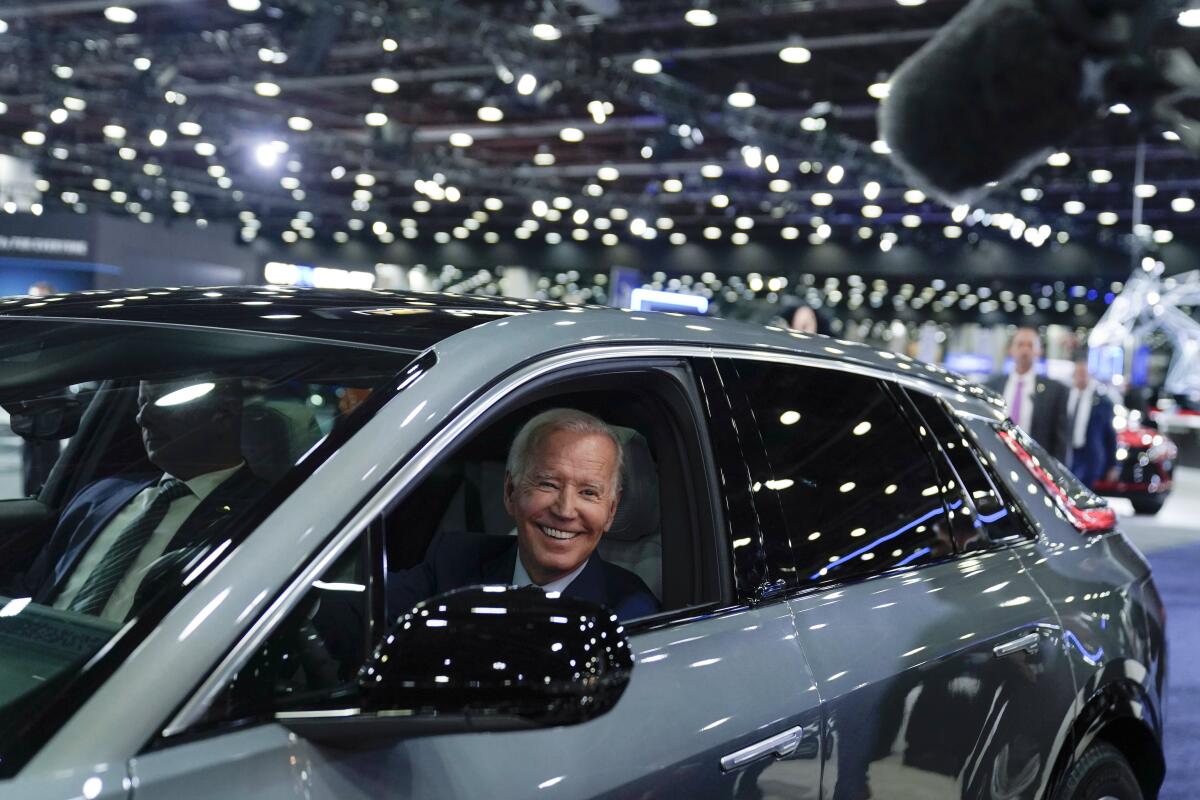
- Share via
On the surface, the Biden administration’s recent announcement that it was forging ahead with more than a dozen renewable energy projects on Western public lands sounded like a big deal.
In some ways, it was. The U.S. Department of the Interior reported important steps forward for 15 solar farms, electric transmission lines and potential geothermal power plants in California, Arizona, Nevada and Utah — crucial tools for replacing the coal, oil and fossil natural gas that are fueling deadlier heat waves and polluting our air with dangerous fumes.
“The projects we are advancing today will add enough clean energy to the grid to power millions of homes,” Interior Secretary Deb Haaland said in a written statement this week
Yes, they will — if they ultimately get approved, and then built.
It can take many years for federal officials to go through all the required steps to evaluate proposed solar farms, wind turbines and transmission lines, including an in-depth study of how they might harm wildlife and local ecosystems. It’s an important but, at times, painfully slow process, during which the climate crisis keeps getting worse.
There’s also a big difference between federal officials approving a project and that project coming to fruition. I learned as much in 2016, when I scrutinized the Obama administration’s outgoing claim that it had approved 60 energy projects capable of producing more than 15,000 megawatts of climate-friendly power. I determined that only half of them had reached construction or operation, with a total capacity of just 5,100 megawatts.
So it’s great that the Bureau of Land Management — the Interior Department agency tasked with managing nearly 250 million acres, or about one-tenth of the nation’s surface area — announced this week that it’s ready to start studying the environmental impacts of seven solar farms proposed in Nevada’s Esmeralda County, and an eighth in Arizona.
But as far as renewable energy developers are concerned, it’s too early to celebrate. There’s a reason the American Clean Power Assn. — a major trade group for developers — didn’t issue a news release trumpeting this week’s announcement.
“It’s progress,” JC Sandberg, the group’s chief advocacy officer, said in an interview. “More progress needs to be made.”
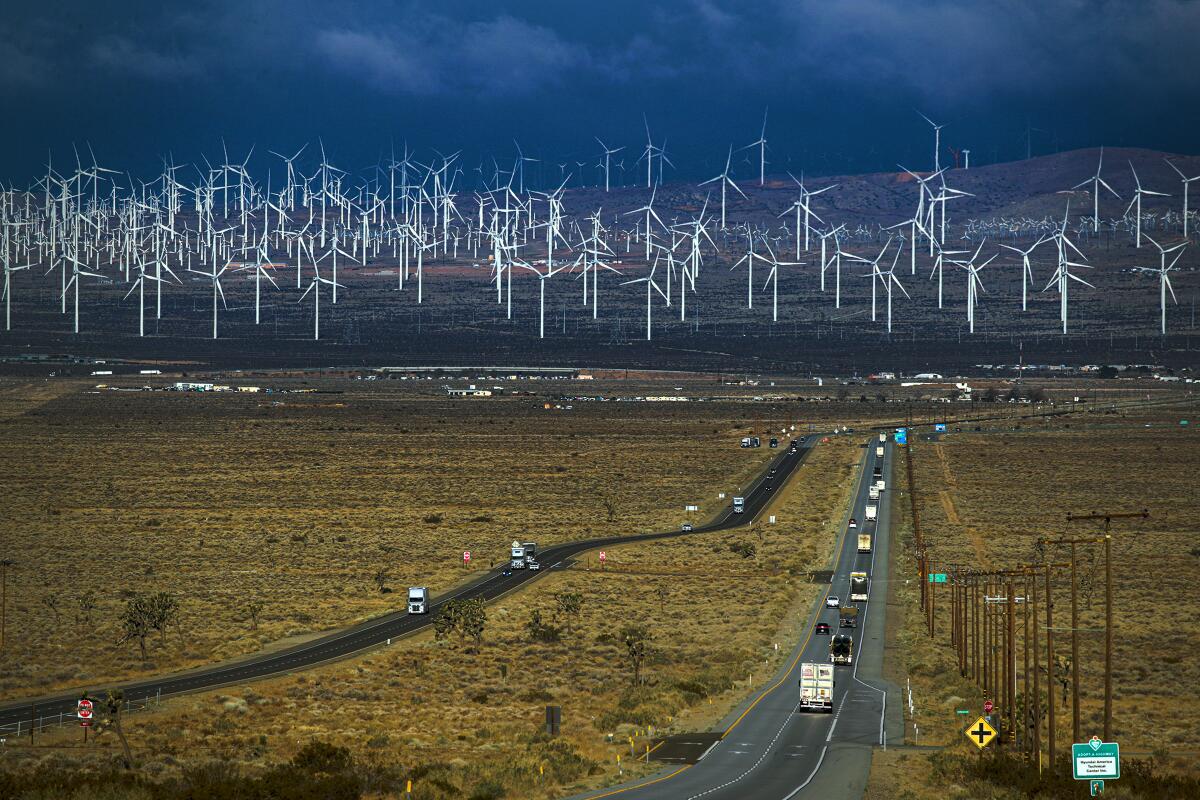
Developers are cautiously optimistic that new regulations could speed things up.
A draft rule proposed by the Biden administration this summer would reduce the fees paid by solar and wind companies looking to build on public lands by around 80%, while streamlining the permitting process. The debt-limit bill passed by Congress in June could help, too. It set a two-year deadline for federal agencies reviewing energy projects to issue environmental studies.
But renewable power companies worry that another Biden administration proposal could hurt their business. The Public Lands Rule would put ecosystem conservation on an equal footing with energy — which sounds reasonable, but solar and wind developers say that could make it hard for them to get projects approved even in spots with little environmental risk.
Also relevant: the Interior Department’s ongoing work to update a decade-old plan guiding solar development across Western states. The update is being modeled after a California-specific regulation called the Desert Renewable Energy Conservation Plan, which protects millions of acres of public land from development while directing solar and wind companies to a few hundred thousand acres deemed appropriate for energy projects.
Tom Vinson, vice president for policy and regulatory affairs at the American Clean Power Assn., told me the industry has “not found the [California desert plan] to be particularly helpful.” It took eight years to finalize, and Vinson said there was a six-year gap between its completion and the first renewable energy project getting approved within its boundaries.
“That long to get projects through the pipeline should not be viewed as a success,” he said.
Many environmental activists see a different story.
Kim Delfino, who works with conservation groups through her consulting firm Earth Advocacy, pointed to the newly completed Oberon solar farm, which features 500 megawatts of solar and 250 megawatts of battery storage on 2,600 acres of public land in the California desert. Federal officials approved Oberon’s construction just 16 months after launching an environmental review.
The Biden administration touted Oberon’s completion in this week’s announcement — with good reason, Delfino said. She sees the project as a sign that the California desert plan is doing its job, reducing the need for extensive environmental reviews while averting the kind of bitter fights between conservationists and developers that have slowed solar and wind in the past.
“We’re not arguing anymore,” Delfino said. “We’re moving the projects forward.”
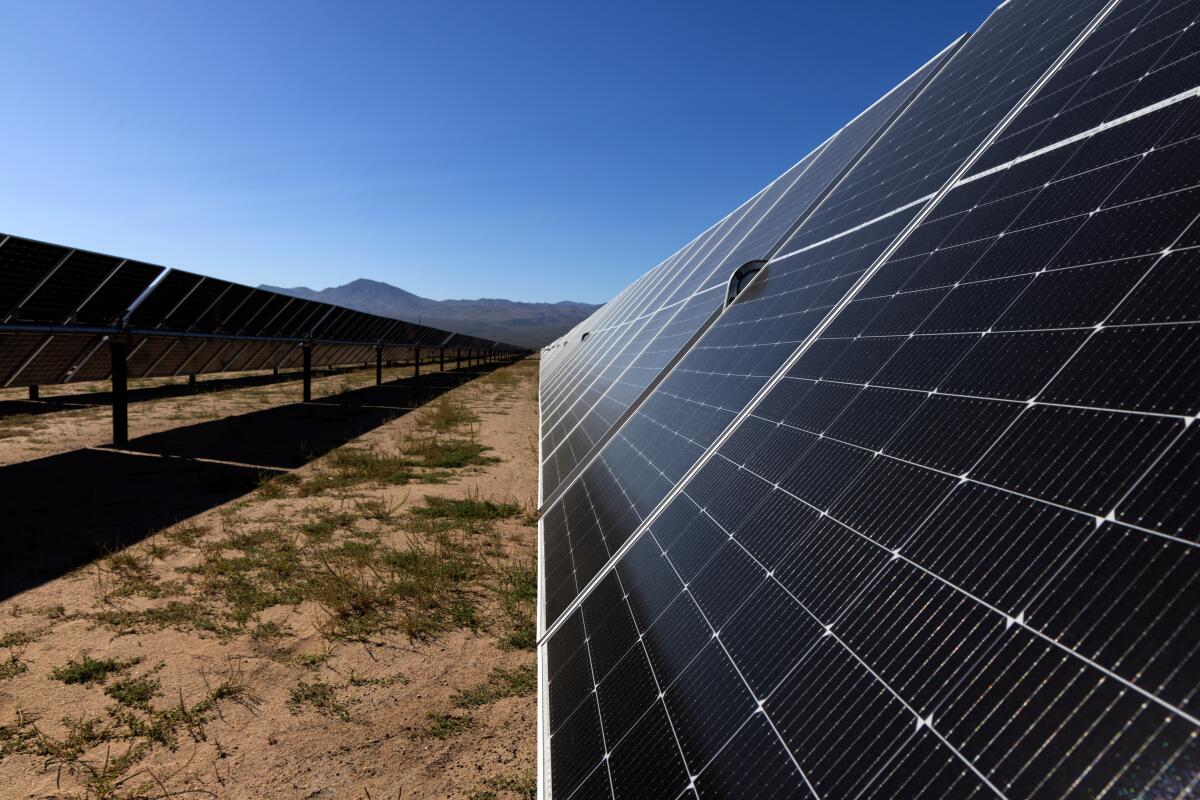
Asked why there hasn’t been a bigger clean energy building boom on public lands in the California desert, Delfino pointed to the growing popularity of solar development on private agricultural land in the San Joaquin Valley as one likely reason. Farmers short on water have increasingly looked to fields of solar panels as a profitable alternative to fields of thirsty crops.
Overall, Delfino is satisfied with the Biden administration’s handling of renewable energy on public lands.
“This is complicated stuff. And there are a lot of moving parts to bring stuff to the scale we’re talking about,” she said.
She’s right — getting renewable energy built on public lands is complicated. In addition to the environmental harms that must be dealt with, there are small-town residents who don’t want to look at solar panels or wind turbines. Anti-clean energy lies spread by former President Trump and others are another obstacle — as are well-meaning activists who think all solar should go on rooftops, even when the numbers say rooftop solar won’t be nearly enough to replace all the fossil fuels we burn today.
Budget constraints can be a challenge too.
The Bureau of Land Management’s director, Tracy Stone-Manning, has urged Congress to dramatically increase funding for her agency’s renewable energy program, saying the money would let her staff study and approve solar and wind farms faster. Instead, the Republican-led House of Representatives voted this month to cut the Interior Department’s annual budget by $677 million — a proposal highly unlikely to become law, but a reminder that more money to study clean energy isn’t in the cards.
And for renewable energy projects that federal officials do manage to study and approve, there’s only so much that agencies such as the Interior Department can do to move them from approval to construction. It’s up to project developers to sign up buyers for the solar and wind power they’re selling, and also secure financing and get permission to connect to the electric grid.
So I’m sympathetic to President Biden and his appointees as they work to grow clean energy on public lands — and encouraged by the progress, however marginal, that they touted this week. A journey of 1,000 solar farms starts with a single panel.
I’m also sympathetic to conservationists working to preserve public lands. And so is the Biden administration.
“We can conserve the special, beautiful, amazing wonderful places that we all love,” said Janea Scott, senior counselor to the Interior Department’s assistant secretary of land and minerals management. “We can also put a little bit of clean energy there.”
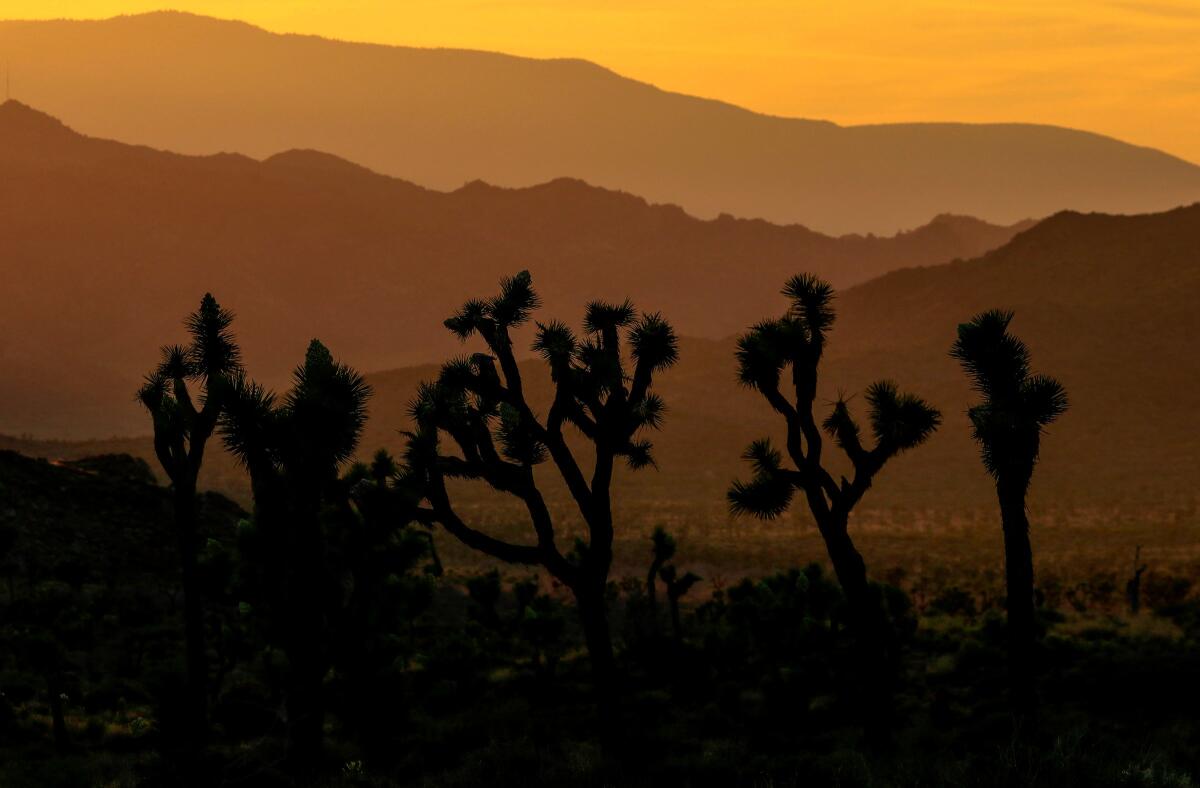
The Biden administration is aiming to permit 25,000 megawatts of clean energy on public lands by 2025 — which sounds like a lot but should require just 0.1% of the Bureau of Land Management’s acreage. The bureau says it has approved 46 renewable energy projects since Biden took office and is reviewing 66 more, with the potential to generate 44,000 megawatts overall.
The numbers sound impressive, but take them with a grain of salt: Many projects almost certainly won’t get built even if they’re approved. And others will be built smaller than currently designed, because there won’t be enough buyers for the power.
When I talked with Sandberg from the American Clean Power Assn., he told me just 1% of the nation’s wind energy and 5% of its solar energy is produced on federal lands. To him and his industry colleagues, those numbers leave a lot to be desired.
“There’s enormous development potential on federal land,” he said.
There’s also enormous potential to protect habitat, and hiking trails, and head-spinning views. We can’t lose sight of those values, any more than we can lose sight of the death and destruction coming our way if we keep burning fossil fuels.
So yes, it’s good to see some clean energy projects moving forward on public lands. It would be better to see a lot more.
ONE MORE THING
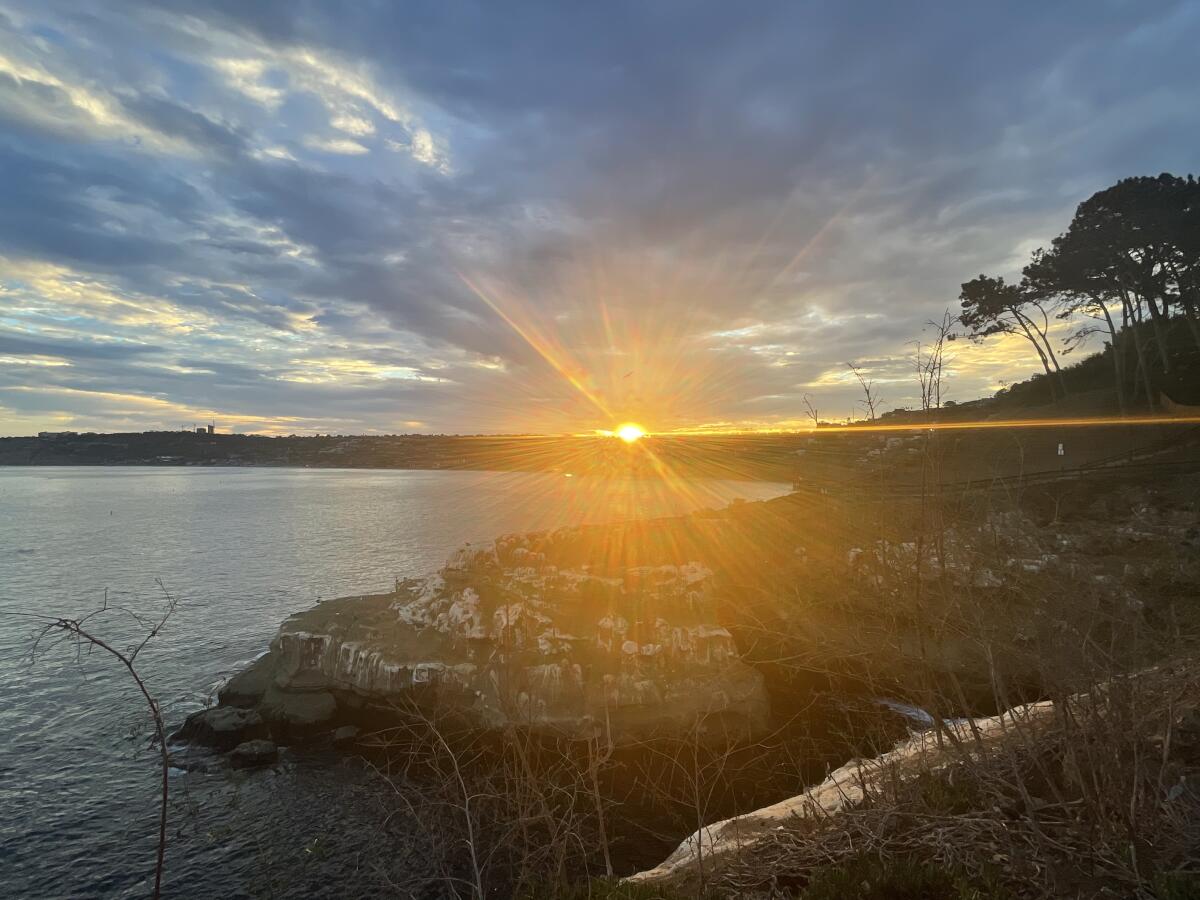
What gives you hope?
For the Thanksgiving Day edition of this newsletter, I’m planning to feature short write-ups from Boiling Point readers about what keeps them hopeful, amid the death and destruction and general chaos wrought by climate change. I did the same thing last year with people who work on climate change professionally, and the year before that with my L.A. Times colleagues.
Want me to include your thoughts in this Thanksgiving’s edition? Please reply to this email with roughly 100 to 150 words sharing what makes you optimistic, along with your full name and the city or county where you live. If there’s a photo you’ve taken that can accompany your words, even better (although not required).
There are no strict rules for what you can discuss — it’s just got to have some nexus with climate, the environment or the natural world more broadly. The deadline to submit is Nov. 17.
Looking forward to hearing from everyone.
This story is the latest edition of Boiling Point, an email newsletter about climate change and the environment in California and the American West. You can sign up for Boiling Point here. And for more climate and environment news, follow @Sammy Roth on Twitter.
Toward a more sustainable California
Get Boiling Point, our newsletter exploring climate change, energy and the environment, and become part of the conversation — and the solution.
You may occasionally receive promotional content from the Los Angeles Times.




